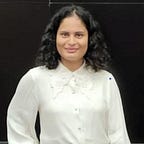LGBTQ
History’s First Gay Astronaut
Why is STEM so straight?
Source: Wikimedia
Sally Ride made history as America’s first woman in space on 18th June 1983. However, it was only after her death that it became known that she was gay.
There were institutional reasons why Ride, a Ph.D. in astrophysics, decided not to come out of the closet during her lifetime. She was just 32 she when to went to space.
During her stint at NASA, she was part of many firsts.
• She was the first woman to use the robot arm in space
• She was the first to use the arm to retrieve a satellite
• On her second flight, the Challander, she spent more than 343 hours in space
• This flight was also historical in the sense that it was the first flight to include more than one woman. Ride was accompanied by Kathryn D. Sullivan
Why is STEM so straight?
Source: MDPI
According to a study conducted undergraduate students who identify as LGBTQ are less likely to continue their STEM majors¹. Obviously, since these students drop out of STEM and do not go to graduate…
